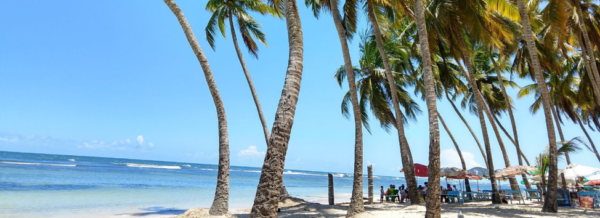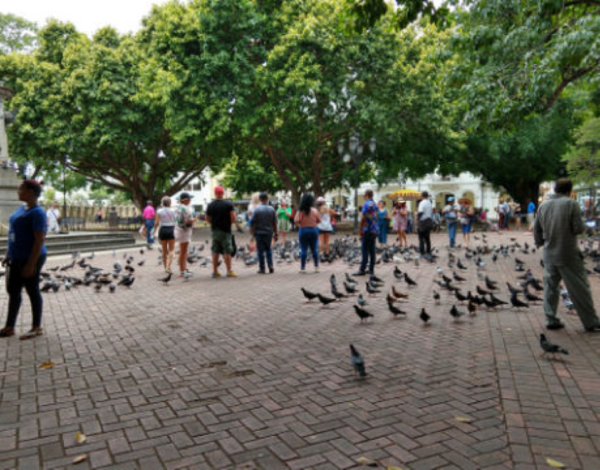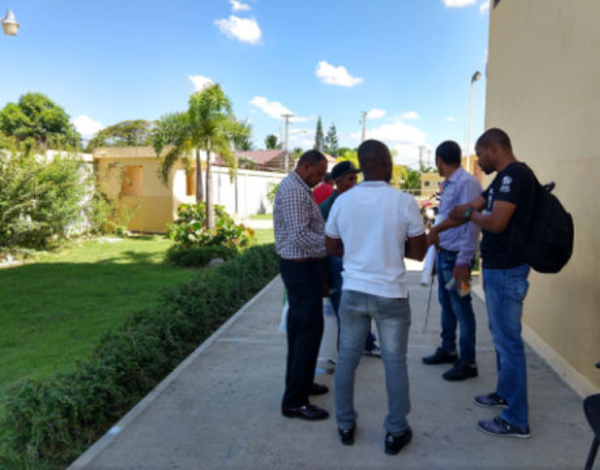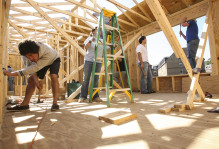Finding Our Way in Santo Domingo: Navigating Expectations
By Katherine Armstrong ’20
Summer Fellow 2019 Cohort
Habitat For Humanity, Santo Domingo, Dominican Republic
After a week in Santo Domingo, I am beginning to feel more comfortable finding my way around the city and our neighborhood. Jioni and I are living in a beautifully outfitted apartment in a residential area of the capital of the Dominican Republic, but even on our street there are clearly evident differences in class. Luxurious apartment buildings loom over trash-filled lots; shiny new cars drive alongside dented, rusty ones. I am not exactly surprised by these stark differences, but I did not expect to see them so closely meshed together. Wherever we go in the city, we encounter traces of class difference.
When working and traveling in a new city, figuring out how to get from place to place is bound to take up much of your time. The seemingly mundane topic of transportation provides a framework for understanding safety, comfort, and class in the Dominican Republic. Jioni and I have been surprising everyone from our Airbnb hosts to our colleagues with our transportation choices.
On one of our first days off, we took a trip to the beach, which is the top pastime for visitors to the Dominican Republic and nearly as popular with the locals. We wanted to take the bus, which would be more affordable and, we thought, more interesting. Our hosts had suggested several drivers de confianza, trusted, which is a common way to take longer trips if you do not have a car. Trust is like a currency here, and it serves to differentiate between the people you know and the people you don’t. It does not necessarily convey closeness, but usually describes people who work for you. Despite our hosts’ recommendations, we were determined to try taking the bus. Our arrival by Uber to the bus stop was disorienting. We found ourselves on a street bustling with vendors, pedestrians, and cars, but without any signs that might indicate which of the many buses to take. Fortunately, we were directed to the correct bus by some friendly people on the street and successfully arrived at the beach, where we spent a tranquil day by the water. Back at home, our Airbnb hosts were incredulous that we had taken public transport. “No confíen en todo el mundo,” they said. Don’t trust everyone you meet.
Our experience getting to work has been similar. When we showed up at the office the first day, with a light sheen from the heat and humidity of the walk, our coworkers could hardly believe it. “You walked?!,” they asked, “You didn’t take an Uber?” Several times they reminded us not to take out our smartphones on the street. They were so disbelieving that we chose to walk that they insisted on giving us a ride home at the end of the day.
It is hard to tell whether their surprise and apprehension comes from their own standards of comfort, their expectations of us, or their concern for our safety. I think it’s a combination of the three. Dominicans who are well off enough to own a car (or pay for an Uber) drive any distance over a couple blocks. They seem to expect us to do the same, because they believe us to be at least as well off, if not more so. In addition, they are worried for our safety. Passersby can always tell that we are not from around here.
While we choose to walk when we can, I do sometimes feel ill at ease. In the daytime and at night, men on the streets talk at us and catcall. They seem emboldened by the fact that we appear to be foreigners. I am reminded of the same discomfort I felt walking in Argentina, where women on the streets were treated similarly. Fortunately, I have yet to feel genuinely unsafe walking here.
As we move about the city, our modes of transportation − and Dominicans’ reactions to them − have revealed much about how Dominicans live their daily lives, including their expectations of security and comfort. Over the next four weeks, we will continue to explore the landscape of Santo Domingo and challenge the expectations of those we meet.







No comments.
Comments are currently closed. Comments are closed on all posts older than one year, and for those in our archive.